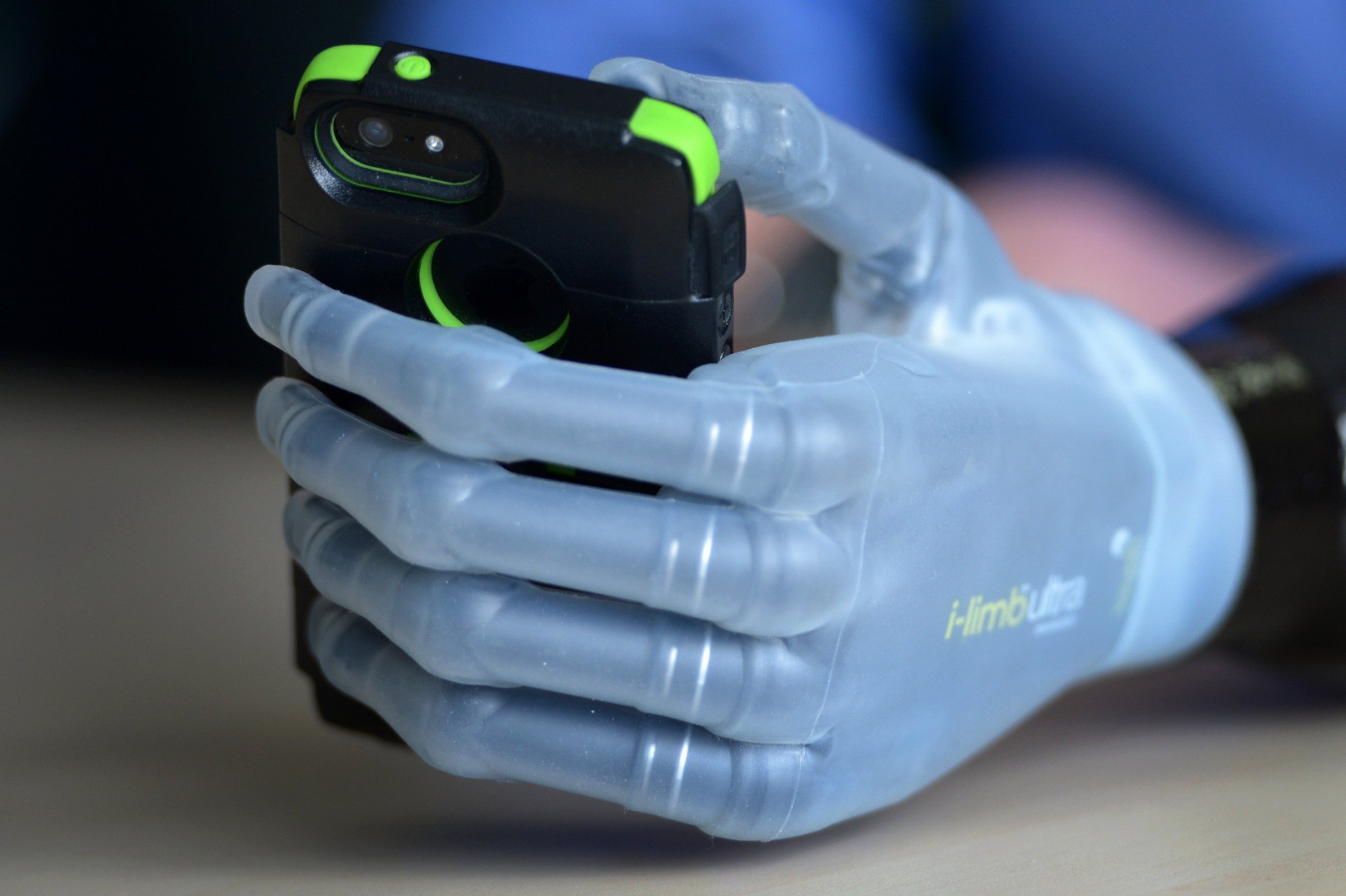
The most essential app Aimee Copeland has downloaded for her iPhone isn’t Facebook, Candy Crush Saga or Evernote. It’s “my i-limb,” an app that allows her to easily change the gestures her two prosthetic hands can make while on the go. Copeland, who lost her hands after a zipline accident in 2012, used to have to visit a registered prosthetist who had access to special software in order to adjust the grips on her hands for different physical activities. Now, with the i-limb bionic hand and its accompanying mobile app, such changes are as simple as booting up her phone or tablet.
“The two things go together,” she says of the hands and the app. “It really allows me to have a greater control over the i-limb instead of having to go the prosthetist to have any tiny thing adjusted.”
Copeland is just one of the many people with disabilities who now use a smartphone as a tool to help navigate the physical world. A bevy of apps and services are helping not only those with prosthetic limbs but also those with poor hearing, troubled vision and impaired motor skills.
Copeland’s hands are developed by Touch Bionics, a Scottish company that specializes in prosthetic limbs. The company launched its app for Apple’s iOS devices in 2013 in order to provide users more mobility. Previously, changing grip settings would have required downloading software to a PC or visiting a prosthetist. Now the company’s app and the hand can communicate wirelessly and quickly via Bluetooth. “We wanted to move it to a more mobile platform,” says Touch Bionics CEO Ian Stevens. “You’re not going to take a PC to a restaurant with you if you want to reprogram the hand.”
Beyond programming the hand itself, users can also place special bluetooth sensors called grip chips around their home or office to shift their hand to different positions when it enters the chip’s proximity—a chip near a sink, for instance, might automatically shift the hand’s grip to effectively grasp a water faucet. The chips can also be programmed by the i-limb mobile app.
Apple’s ubiquitous iPhone is increasingly becoming a centerpiece of this new ecosystem. The California company has sold more than half a billion iPhones since the device launched seven years ago. Hearing aid manufacturer Starkey Hearing Technologies, for example, offers an iPhone app that allows users to fine-tune audio settings—such as volume, bass and treble—of its hearing aids. Using the iPhone’s so-called geo-fencing technology, users can program their hearing aids to automatically adjust to specific areas, a noisy restaurant for instance or home. Users can also pipe music and phone calls directly into the hearing aids, and even use an iPhone’s microphone to speak into the wearer’s ear from a distance.
Beyond the high-tech features, the ability to adjust the hearing aid’s basic settings has big appeal to users, says Dave Fabry, Starkey’s vice president for audiology. “You don’t have to fiddle around up in your ears or use an additional piece of hardware,” he says. “They just look like they’re doing what the rest of the world is doing, fiddling around with email or text. It reduces that stigma that they’re doing something different with that special device.”
Both Starkey and Touch Bionics say their phone-enhanced products have seen strong sales. Stevens said his company’s mobile app was “definitely a contributing factor” to the firm reaching $20 million in sales last year, while Fabry says Starkey’s app has opened up hearing aids to a new demographic. “We’re seeing young people being more attracted to this,” he says, noting that the average hearing aid user is 69. “It’s been selling like crazy.” Both companies apps are exclusive to Apple’s iOS for now, but they say they have versions for Google’s Android operating system in the works.
These small companies are able to offer innovative apps thanks to the groundwork laid by the tech giants in developing platforms that can cater to the disabled. Apple’s iOS 7 comes pre-installed with a wide variety of accessibility features. A program called VoiceOver helps the visually impaired by reading aloud whatever item a user touches on his iPhone screen, while AssistiveTouch lets people with motor challenges create alternate gestures to interact with their phone. Google’s Android also boasts accessibility features, and the company’s newest gadget, Google Glass, is already attempting to improve the lives of users with disabilities.
Advocates for the disabled still want software makers to do more. While praising Apple as the firm that “has done more for accessibility than any other company to date” earlier this year, Mark Riccobono, president of the National Federation of the Blind, said his group is still trying to ensure that all developers make their apps as accessible as possible.
Though accessibility in technology is hardly standard, experts say significant progress has been made. “In the past, people with disabilities have often been the afterthought,” says Mark Perriello, president of the American Association of People With Disabilities, which works with tech companies to implement new technologies for the disabled. “Now people with disabilities are at the forefront of these technological innovations.”
More Must-Reads from TIME
- Inside Elon Musk’s War on Washington
- Meet the 2025 Women of the Year
- The Harsh Truth About Disability Inclusion
- Why Do More Young Adults Have Cancer?
- Colman Domingo Leads With Radical Love
- How to Get Better at Doing Things Alone
- Cecily Strong on Goober the Clown
- Column: The Rise of America’s Broligarchy
Contact us at letters@time.com